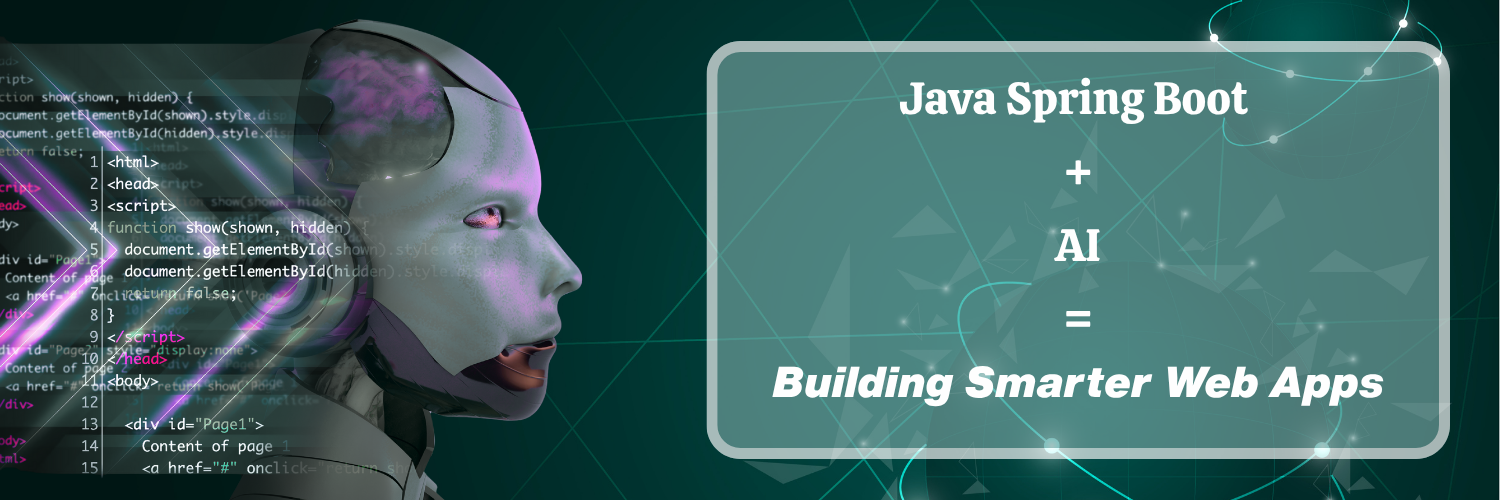In 2025, web apps won’t just be created — they’ll be taught to think for themselves. Companies from all sectors are quietly moving away from traditional development methods to craft smart digital experiences that learn, adapt, and personalize in real time.
At the core of this transformation are Java development services, driven by Spring Boot — a framework that has grown from supporting enterprise systems to paving the way for the future of AI-powered web intelligence.
From Static Pages to Self-Learning Systems
Have you ever visited an e-commerce site that seemed to know exactly what you were looking for, even before you typed it in? That’s not just clever marketing; it’s the power of AI-driven Java web development in action.
Today’s Java developers are seamlessly weaving machine learning models and AI frameworks into Spring Boot applications, transforming standard systems into intelligent, self-learning platforms. These applications can monitor user behavior, understand context, and adjust their responses in real-time, creating experiences that feel more like a friendly chat than just lines of code.
The Rise of AI-Infused Development
Artificial Intelligence is no longer an optional enhancement.
It’s now the central nervous system of modern digital platforms.
In this new era, Java web development services have become the bridge between enterprise stability and AI innovation — creating smart, scalable, and secure systems that think ahead.
Here’s how AI is transforming Java-powered web apps in 2025:
1. Predictive Intelligence — Apps That Anticipate
Imagine a travel portal that remembers your last trip, predicts your next destination, and recommends ideal flight times — all before you even type a query.
This is predictive intelligence in action.
Using AI models integrated with Spring Boot microservices, apps can analyze user data in real time and make decisions that feel human.
For a Java developer, this means writing less code and focusing more on how data drives user delight.
2. Conversational Interfaces with a Human Touch
Gone are the days when “support” meant waiting for a reply.
AI-powered chatbots built into Java Spring Boot systems now handle thousands of conversations simultaneously — responding with natural, context-aware precision.
Tools like OpenAI’s GPT APIs and Rasa integrate seamlessly into Java development services, letting businesses deploy chatbots that learn from every interaction and evolve with each customer.
3. Automation That Outthinks Developers
AI isn’t just enhancing user-facing features — it’s optimizing development itself.
Spring Boot applications now leverage AI to monitor performance, auto-scale resources, detect anomalies, and even self-heal when bugs appear.
For modern Java web developers, this means moving from maintenance-heavy workflows to innovation-driven ones — where the system grows smarter with time.
4. Smarter Security for a Smarter Web
In 2025, cyber threats are evolving just as quickly as users do, which is why relying on traditional rule-based security simply won’t cut it anymore. AI-driven security systems integrated into Spring Boot applications can spot suspicious patterns in the blink of an eye, effectively blocking potential breaches before they even happen.
For industries like fintech, healthcare, and e-commerce, this kind of predictive protection is a total game-changer, giving businesses the peace of mind that their AI-powered growth won’t compromise their safety.
5. Intelligent Analytics That Answer in Seconds
Leaders no longer want dashboards full of numbers — they want answers.
With AI integrated into Spring Boot, analytics tools now use natural language processing to let decision-makers “talk” to their data.
Ask your system, “Which product performed best last quarter?” and get an immediate visual summary.
That’s not just convenience — it’s AI-driven clarity, powered by Java web development services that fuse data science with enterprise logic.
6. The Hidden Layer — Bridging AI Models with Java
While many AI models are built in Python, frameworks like Deep Java Library (DJL) and TensorFlow Java API are making it easier to integrate intelligence directly into Spring Boot microservices.
Java development services are now using hybrid architectures — where machine learning engines communicate through REST APIs, delivering seamless, low-latency performance.
The result? Apps that learn faster, respond smarter, and scale effortlessly.
The Future — AI-Native Java Development
Tomorrow’s Java applications are set to be more than just AI users — they’ll be AI-native. With the rise of technologies like LangChain4j, Java apps will be able to create personalized content, streamline workflows, and adapt on the fly.
For Java developers, this means a shift from simply coding to becoming architects of intelligence, crafting experiences that can understand, evolve, and connect in meaningful ways.
Conclusion: Intelligence Is the New Interface
AI isn’t replacing developers; it’s amplifying them.
With Java Spring Boot, businesses now have the tools to build applications that are fast, secure, scalable — and above all, intelligent.
But in an AI-driven world, intelligence alone isn’t enough.
Even the smartest systems need visibility, discoverability, and a strong SEO foundation to thrive.
To learn how developers can align technical brilliance with digital visibility, explore our guide — SEO for Developers: Building Websites That Rank & Perform.
Because in 2025, success doesn’t belong to the biggest platform — it belongs to the smartest one.


